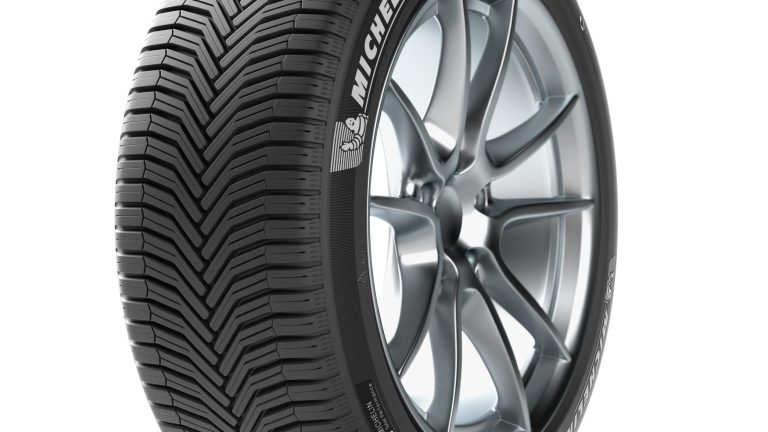Michelin’s CrossClimate + tyre has been heralded as “exemplary” in rigorous tests carried out in Germany.
Auto Bild magazine staged what it believes are the first ever published in-depth tests comparing the performance of different ranges of tyres as they wear.
The exceptional results for the CrossClimate+ are testament to Michelin’s commitment to making tyres that are safe down to the legal minimum tread depth of 1.6mm.
 Some parts of the tyre industry recommend that tyres should be changed when they have 3mm – or even 4mm – of tread remaining. But Michelin believes this is unnecessary, costly to the motorist and harmful to the environment.
Some parts of the tyre industry recommend that tyres should be changed when they have 3mm – or even 4mm – of tread remaining. But Michelin believes this is unnecessary, costly to the motorist and harmful to the environment.
According to the magazine, this stance “puts Michelin’s competitors on the ropes.”
The tests covered a range of criteria across snowy, wet and dry conditions, including braking, handling, skid pan performance, mileage, rolling resistance and aquaplaning.
At the end of the tests, Auto Bild said it was “able to rebut the general request to change tyres at half tread depth by referring to the compelling performance of the Michelin tyre.”
The article says it is “inconceivable” that people would throw away an apple after only eating half of it, or that football games would finish after 45 minutes – so why should they pay for new tyres when their old ones could still perform well?
John Young, managing director of Michelin Tyre, said: “These results are very pleasing, and they back up everything we have been saying.
“It is entirely possible for every tyre manufacturer to make tyres that are safe down to the legal minimum tread depth. But the sad fact is, at the moment, that not all tyres are born equal.
“Changing tyres too early is bad for the motorist as they have to change tyres more frequently and because tyres use less fuel as they wear. It’s also extremely bad for the environment as more natural resources and energy are used making millions of replacements that should be unnecessary.”
Tyres were tested new, then at 4mm of tread and 2mm of tread. The other products in the line-up were also “all-season” tyres: the Goodyear Vector 4Seasons Gen-2, the Pirelli Cinturato All Season, the Hankook Kinergy 4S, the Vredestein Quatrac 5 and the Nokian Weatherproof.
In the snow traction test, Auto Bild found the Michelin tyres delivered “constant grip” while in the winter slalom they lost “almost no performance with decreasing tread.”
And when it came to winter handling, “only the Michelin delivers safe handling with two millimetres of tread.”
Commenting on the wet braking results, Auto Bild testers said: “It’s remarkable that the two millimetre Michelin brakes better than most candidates with 4mm remaining tread.”
The tests showed that the Michelin CrossClimate + “had by far the lowest wear.” The CrossClimate + was the only tyre to beat the projected 50,000km mark, with the Pirelli predicted to last for 31,900km and the Hankook predicted to deliver 32,700km.
Jamie McWhir, Michelin Tyre technical manager for car, van and 4×4, said: “The Auto Bild results need to kick-start a new way of thinking for the tyre industry as a whole.
“Consumers deserve tyres that last a long time and that are safe down to 1.6mm. So does the environment.
“All manufacturers should follow our lead, and the tyre labelling testing regime should be changed to reflect worn performance.”
A Michelin-commissioned report from Ernst & Young found that changing tyres at 3mm instead of 1.6mm would cost European drivers an extra £6 billion a year in additional tyre purchases and increased fuel consumption because tyres use less fuel as they wear.
The report also found that changing at 3mm instead of 1.6mm would lead to an additional 6.6million tonnes equivalent of CO2 emissions because of the need to make more tyres and increased fuel consumption.








